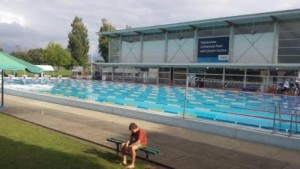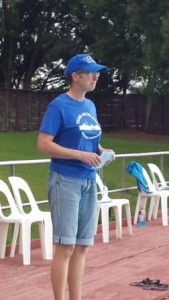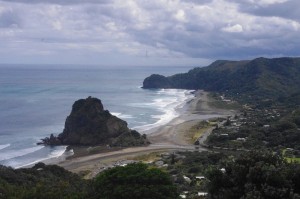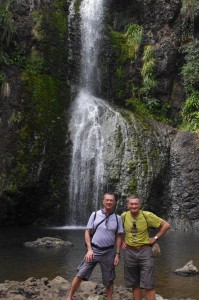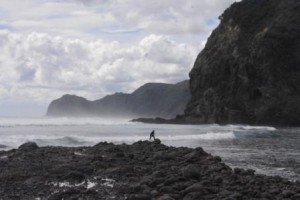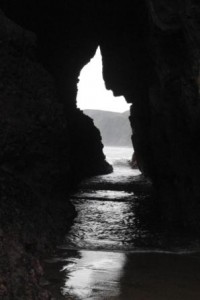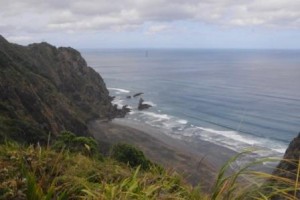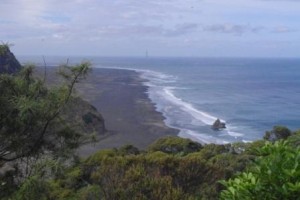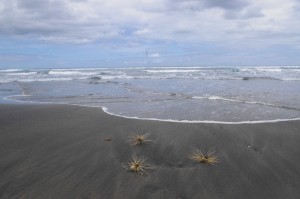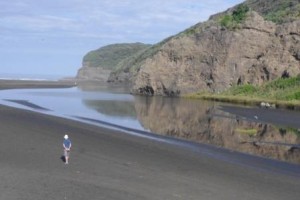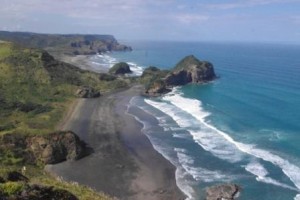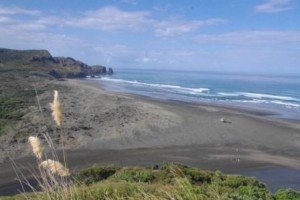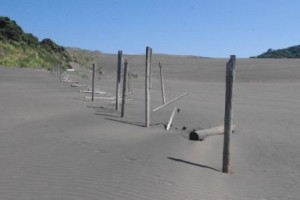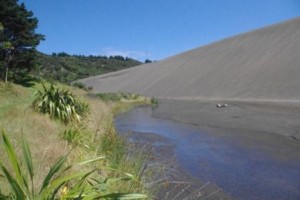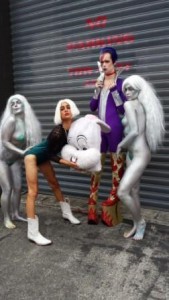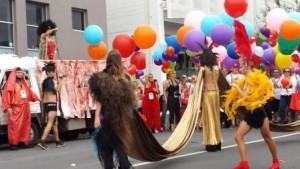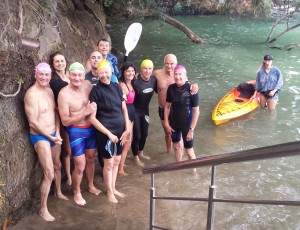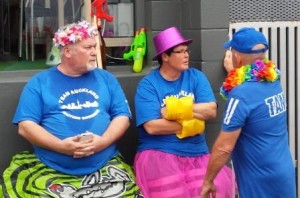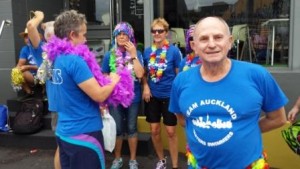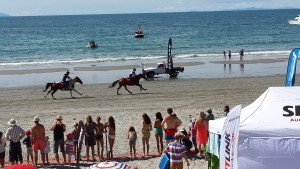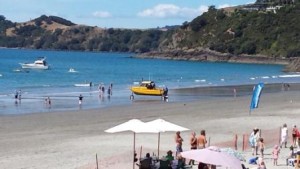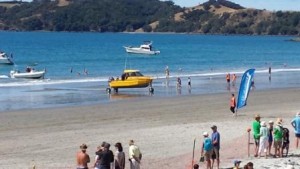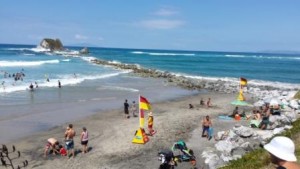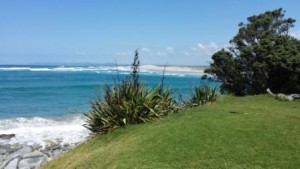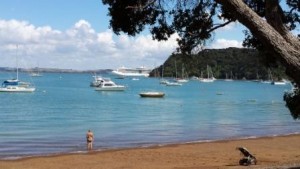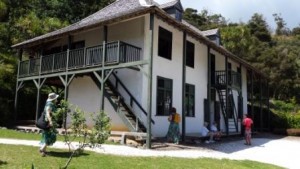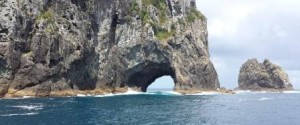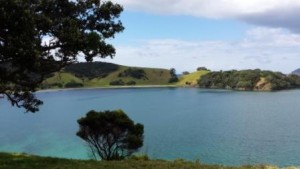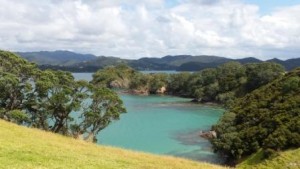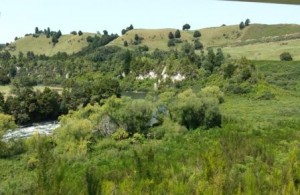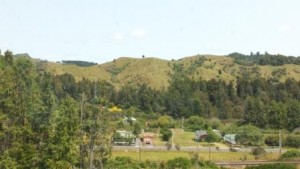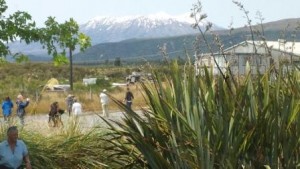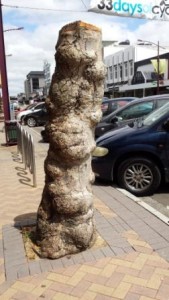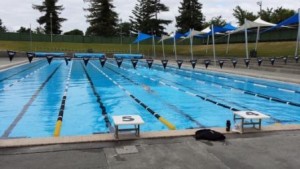It’s my first ‘sanctioned’ swim meet in New Zealand – Katikati and Wellington were for fun, and the experience. This event is over two days and held at the Papatoetoe Centennial Pool, South Auckland. I’ve been topping up my training sessions at the Te Huruhi Primary School pool on Saturday mornings with the occasional Sunday visit to the Tepid Baths in downtown Auckland. As this is a Long Course meet, that means a 50 metre pool, I put in a session at the Newmarket Olympic Pool, which is woefully undersubscribed, so that team mate Clive and I have a lane to ourselves.
Papatoetoe Centennial Pool
I’ve entered two races on the Friday evening session, but this means leaving Rocky Bay after Lunch and catching the 2.30 ferry with my fold up Brompton bike in the back of the Rav4. The Brompton continues to get admiring glances and comments like ‘cool bike’ – it’s a great opener for conversation and people love to watch it being folded and un-folded. At Britomart, I get on a train, but it has broken down and is cancelled. The next train is fairly full, and gets even more crowded picking up the school kids as we go along. By the time we get to Papatoetoe, careful manoeuvring is required to get me and the Brompton out of the train. The cycle ride to the Centennial Pool turns out to be quite short, so I’m in good enough time for the warm-up. It’s a chance to get acquainted with an unfamiliar pool, practice turns and starts.
TAMS Coach Cynthia gets a job judging turns
There are three of us from Team Auckland Masters Swimmers this evening and first up for me is the 100m Backstroke. It really does seem like a long way in a 50 metre pool, but it’s good enough to get a bronze medal. David is doing the 1500m freestyle and in New Zealand, swimmers are able to swim their 800 metres concurrently but I can’t see how that works strategically. The organisers are short on officials so I volunteer to flip the number chart at the end of the pool. In order to save time this event is being done with two swimmers per lane. This means combining two heats so each lane has a faster and slower swimmer. For the first heat, we’ve got enough volunteers for each swimmer. My swimmer is 83 and doing the whole race on his back and so needs to look back at the chart after he’s done his tumble turn.
Over in lane 6 Kath Johnstone, aged 98, is going for a world record. Early on in the race, there’s a collision between her and the other swimmer in her lane. She stops. Long after all the others have finished, Kath is still going. Every now and then she stops at an end for a rest. Officials urge her to keep going and half way up the penultimate lap she hangs on to the lane rope for another rest. I’ve no idea if she got her record or was disqualified. Swimmers discuss the rules and it seems you are allowed to stop or put your feet on the bottom as long as you don’t make progress. Others reckon they’ve seen her take some steps, but It’s impossible to be sure. The rain sets in and I get wet flipping for the next double heat. The volunteers have melted away so I’m looking after two swimmers. Just before that last heat, I discover that because most people are doing the concurrent entry, there is only the one heat of the 800m and I have to abandon the flip charts so I’m ready to swim. I feel that I need another warm-up, but the indoor pool has closed. It’s a bit weird sharing a lane, especially as my younger and faster neighbour has a style which churns up the water with his kick. Once he has finished, I can enjoy the lane to myself. Although my time is quite respectable, I’m knocked into third place by Mark Tibble – last met in Katikati. He has swum faster than me in his first 16 lengths of the 1500. Wow! It’s a race now, to get the 10.15pm ferry home and David kindly drives me, with the Brompton on his back seat. I have 14 minutes to spare and get home in time for 6 hours sleep. I need to get the 7.15 ferry on Saturday morning.
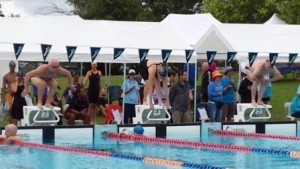
All seven of our team report in on Saturday along with Coach Cynthia Borne. Our butterfly swimmers Ron and Jenny win medals in the punishing 100m; I’m surprised to get a bronze medal in the 50 freestyle and Elizabeth, Clive and Ron get silver medals. We’ve put together a men’s relay team with a combined age of 240-279 years. We win both the Medley and freestyle 200m relays. Yay!
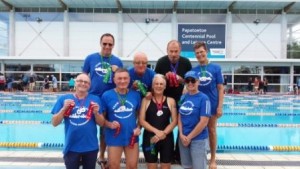
In the 50m Backstroke Elizabeth and I both get silver medals and in the 50m Breaststroke, there is a thrilling and close called race between our team-mates Ed and Clive, who are in the same age group. They go for Gold and Silver in that order, while David gets a bronze in his age group. It’s back to the Fly swimmers, Ed, Ron, Jenny and David for more medals followed by me winning gold in the 200m Backstroke. I know there are no medals for me in the 100m Freestyle as everyone has entered, but I’m next to speedy Ron, two age groups above me. We chase each other up the pool and back. He beats me by one second. Apparently our team were jumping and down getting very excited. It’s all over now but for the mixed Freestyle and Medley relays where we get second and third. It’s been a fantastic meet and my times are creeping back to where they should be, so I’m well satisfied.
